1 X Leopard Bushfish – Spotted Ctenopoma – Ctenopoma Acutirostre – Labyrinth (1), Thriving Tropical Fish That Enhances Any Aquarium, Perfect for Beginner or Experienced Aquarists
£11.49 Original price was: £11.49.£9.68Current price is: £9.68.
Welcome these stunning Leopard Bushfish, beautiful inhabitants of your freshwater aquarium. With their elegant coloration and peaceful demeanor, they thrive in community setups. Perfect for aquarists seeking vibrant tropical fish to enhance their aquatic environments. This listing includes 1 individual Leopard Bushfish.
988 in stock
Species Introduction
The Leopard Bushfish, scientifically known as Ctenopoma acutirostre, is a captivating freshwater fish belonging to the family of labyrinth fish. This species is native to the slow-moving waters and swamps of Central and West Africa, where it thrives in densely vegetated environments. The Leopard Bushfish is renowned for its striking appearance, characterized by a unique pattern of spots that resemble a leopard’s coat, hence the name. As a member of the labyrinth fish family, it possesses a specialized organ that allows it to breathe atmospheric oxygen, making it well-suited for the often low-oxygen environments of its natural habitat. This adaptability, combined with its peaceful demeanor, makes the Leopard Bushfish a wonderful addition to both beginner and experienced aquarists’ tanks. With proper care and attention, these fish can live for several years, bringing life and vibrancy to your aquatic environment.
Care Requirements Dashboard
Essential Care Guide for Your Leopard Bushfish
| Optimal Living Conditions | |
|---|---|
| Water Temperature | 24-27°C (75-81°F) |
| pH Level | 6.5-7.5 |
| Water Hardness | 4-12 dKH |
| Minimum Tank Size | 80L (20 gal) |
| Salinity | Freshwater |
| Care Level | Beginner Friendly |
✓ Care Level: Easy
| Tank Size | Water Temperature | pH Level | Hardness |
|---|---|---|---|
| Minimum 30 gallons | 75-82°F (24-28°C) | 6.0-7.5 | 5-15 dGH |
Natural Behavior & Temperament
The Leopard Bushfish exhibits a fascinating array of behaviors that make it a joy to observe. These fish are generally peaceful and can be kept in community tanks with other non-aggressive species. They are known for their unique swimming patterns, often gliding gracefully through the water and utilizing their labyrinth organ to surface for air. In their natural habitat, they are ambush predators, often hiding among plants and debris to catch smaller fish and invertebrates. This behavior translates well to the aquarium, where they appreciate plenty of hiding spots and vegetation to feel secure. Socially, Leopard Bushfish can exhibit territorial behaviors, especially during breeding or when establishing their space, so it’s important to provide ample room and hiding places to minimize stress and aggression. Their calm demeanor makes them suitable companions for a variety of other peaceful fish, enhancing the community tank experience.
Tank Setup Guide
Creating an ideal environment for your Leopard Bushfish is crucial for their health and well-being. A minimum tank size of 30 gallons is recommended to provide enough swimming space and territory. The substrate should be soft, such as sand or fine gravel, to prevent injury to their delicate bodies. Incorporating plenty of live plants, driftwood, and rocks will not only enhance the aesthetic appeal of your aquarium but also create hiding spots that mimic their natural habitat. Plants like Java Fern, Anubias, and Amazon Swords are excellent choices, as they thrive in a variety of water conditions and provide cover for your fish friends. Additionally, a gentle filtration system is advisable to maintain water quality without creating strong currents, as Leopard Bushfish prefer calm waters. Regular water changes and the use of a quality water conditioner will help maintain a stable environment, ensuring your aquatic companions thrive.
Water Quality Management
Maintaining optimal water quality is essential for the health of your Leopard Bushfish. These fish thrive in slightly acidic to neutral pH levels, ideally between 6.0 and 7.5. Regular testing of the water parameters is crucial, as fluctuations can lead to stress and health issues. The ideal water temperature for Leopard Bushfish ranges from 75 to 82°F (24 to 28°C), so a reliable aquarium heater is recommended to maintain consistent warmth. Water hardness should be kept between 5 and 15 dGH, providing a comfortable environment for your fish. Implementing a regular maintenance schedule that includes partial water changes of 20-30% every week will help keep the water clean and clear. Additionally, using a quality water conditioner will remove harmful chemicals and chlorine, ensuring a safe habitat for your aquatic companions.
Feeding & Nutrition
✓ Diet: Omnivorous
The Leopard Bushfish is an omnivorous species, which means they thrive on a varied diet that includes both protein and plant-based foods. High-quality pellets designed for carnivorous fish, along with frozen or live foods such as bloodworms, brine shrimp, and daphnia, will provide the essential nutrients needed for their growth and vitality. It is recommended to feed your Leopard Bushfish once or twice a day, offering only what they can consume within a few minutes to prevent overfeeding and maintain water quality. Additionally, incorporating vegetable matter, such as blanched spinach or spirulina flakes, can enhance their diet and promote overall health. Observing their feeding habits will help you determine the best portions and types of food that your fish friends enjoy. Remember to remove any uneaten food after feeding to prevent water quality issues.
Compatibility Guide
When selecting tank mates for your Leopard Bushfish, it is important to choose species that share similar water parameter preferences and exhibit peaceful behavior. Ideal companions include other labyrinth fish, such as Gouramis and Betta fish, as well as various tetras, rasboras, and peaceful bottom dwellers like Corydoras catfish. Avoid keeping them with overly aggressive or territorial species, as this can lead to stress and potential injury. A well-planned community tank should include a mix of species that occupy different levels of the aquarium, providing a dynamic and harmonious environment. To ensure compatibility, introducing new fish gradually and monitoring their interactions will help maintain a peaceful atmosphere. Always be prepared to separate any fish that display signs of aggression or stress to protect your aquatic friends.
Tank Mate Compatibility Guide
Great Tank Mates
- Gouramis
- Betta Fish
- Tetras
- Rasboras
- Corydoras Catfish
Avoid These Tank Mates
- Aggressive Cichlids
- Large Predatory Fish
Compatibility Note: Always research specific species requirements and observe fish behavior when introducing new tank mates. Individual fish personalities can vary!
Health & Wellness
Important Health Notice
Maintaining the health and wellness of your Leopard Bushfish involves regular monitoring for signs of illness or distress. Common health issues include ich, fin rot, and swim bladder disease. Early detection is key to successful treatment, so be vigilant for symptoms such as white spots on the body, frayed fins, or abnormal swimming patterns. Maintaining stable water parameters and providing a balanced diet will help strengthen their immune system and prevent disease. Quarantining new fish before introducing them to the main tank is also advisable to prevent the spread of pathogens. If health issues arise, consult with an aquatic veterinarian or experienced aquarist for appropriate treatment options. Regular water changes and a clean tank environment will significantly contribute to the overall health of your fish friends.
Breeding Information
Breeding Leopard Bushfish can be a rewarding experience for dedicated aquarists. These fish are mouthbrooders, meaning that the female will carry the fertilized eggs in her mouth until they hatch. To encourage breeding, provide a separate breeding tank with plenty of hiding spots and a gentle filtration system. The water parameters should be slightly altered to mimic their natural breeding conditions, with a temperature increase of a few degrees and a slightly lower pH. Once the female lays her eggs, she will protect them in her mouth until they hatch, usually within a week. After hatching, the fry will remain in her mouth for several days until they are ready to swim freely. It is essential to provide finely crushed food or specialized fry food to ensure their healthy growth. Breeding can be challenging, but with patience and the right conditions, you can successfully raise a new generation of Leopard Bushfish.
Acclimation Process
Introducing new Leopard Bushfish to your aquarium requires a careful acclimation process to minimize stress and ensure a smooth transition. Begin by floating the sealed bag containing the fish in the aquarium for about 15-20 minutes to equalize the temperature. After this, gradually mix small amounts of the aquarium water into the bag every 5-10 minutes for about an hour. This process helps the fish acclimate to the new water conditions. Once the fish have adjusted, gently release them into the tank using a net to avoid adding any transport water that may contain harmful substances. Monitor their behavior closely for the first few days, ensuring they are eating and interacting well with their new environment. A slow and steady acclimation process is crucial for the health and well-being of your Leopard Bushfish.
Long-term Care
The Leopard Bushfish can live for several years with proper care, making them a long-term commitment for any aquarist. As they grow, it is important to monitor their size and adjust their living conditions accordingly. Regular maintenance, including water changes and tank cleaning, will help maintain a healthy environment. Keep an eye on their diet, ensuring they receive a balanced mix of foods to promote optimal growth and coloration. As they mature, Leopard Bushfish may become more territorial, so providing adequate space and hiding spots is essential. Regularly assess their health and behavior, addressing any issues promptly to ensure a happy and thriving aquatic community. With the right care, your Leopard Bushfish will flourish, becoming a vibrant centerpiece in your aquarium.
Natural Habitat Recreation
Recreating the natural habitat of Leopard Bushfish in your aquarium can enhance their well-being and reduce stress. In the wild, these fish inhabit slow-moving waters with dense vegetation, so incorporating live plants, driftwood, and rocks into your tank setup is essential. Aim to create a biotope that mimics their natural environment, providing plenty of hiding spots and shaded areas. Use soft substrates like sand or fine gravel to replicate the riverbed. Additionally, consider adding floating plants to provide cover and reduce light intensity, as Leopard Bushfish prefer dimly lit environments. By carefully selecting plants and decorations that reflect their natural habitat, you can create a thriving ecosystem that promotes the health and happiness of your fish friends.
Seasonal Care Adjustments
As seasons change, so too should your care regimen for Leopard Bushfish. During warmer months, ensure that the water temperature remains stable, as fluctuations can stress your fish. Use fans or air conditioning to prevent overheating, especially in smaller tanks. In colder months, check your heater regularly to maintain the ideal temperature range. Additionally, consider adjusting the lighting duration to mimic natural day and night cycles, as this can influence their behavior and breeding patterns. Seasonal changes may also impact water quality, so regular testing and maintenance are crucial. By adapting your care routine to seasonal variations, you can ensure a healthy and thriving environment for your Leopard Bushfish throughout the year.
Expert Tips
✓ Professional Advice
To ensure the best care for your Leopard Bushfish, consider these expert tips: First, invest in a high-quality water testing kit to monitor parameters regularly. This will help you catch any issues before they escalate. Second, provide a varied diet that includes both high-quality pellets and live or frozen foods to promote optimal health and coloration. Third, observe their behavior closely; any changes in eating habits or swimming patterns can indicate stress or illness. Lastly, engage with fellow aquarists through forums or local clubs to share experiences and gain insights into advanced care techniques. By following these expert recommendations, you can create a thriving environment for your Leopard Bushfish and enhance your overall fish-keeping experience.
Troubleshooting
Despite your best efforts, you may encounter challenges while caring for your Leopard Bushfish. Common issues include stress from aggressive tank mates, poor water quality, and dietary deficiencies. If you notice signs of stress, such as hiding excessively or loss of appetite, reevaluate the tank environment and consider adjusting the tank mates or providing more hiding spots. If health issues arise, such as fin rot or ich, prompt action is necessary. Quarantine affected fish and treat them with appropriate medications while maintaining pristine water conditions. Regular maintenance and observation are key to preventing most issues. By being proactive and responsive, you can ensure a healthy and harmonious aquarium for your Leopard Bushfish.
Scientific Background
The Leopard Bushfish belongs to the family Anabantidae, which encompasses a diverse group of freshwater fish known for their labyrinth organ, allowing them to breathe air. This adaptation is particularly useful in their natural habitats, where oxygen levels can fluctuate. The scientific classification of the Leopard Bushfish places it within the genus Ctenopoma, which includes several other species known for their unique appearances and behaviors. Research into the ecology and conservation of these fish highlights the importance of preserving their natural habitats, as many species face threats from habitat destruction and pollution. By understanding the scientific background of your Leopard Bushfish, you can appreciate their role in the ecosystem and the importance of responsible fish keeping.
Advanced Care Techniques
For aquarists looking to take their care of Leopard Bushfish to the next level, consider implementing advanced techniques such as breeding programs or biotope aquariums. Establishing a breeding program requires a deep understanding of their reproductive behaviors and environmental needs. Creating a biotope aquarium that closely resembles their natural habitat not only benefits the fish but also enhances the aesthetic of your aquarium. Incorporating natural materials and plants, as well as mimicking water parameters, can create a stunning display. Additionally, experimenting with different food types, such as live foods or specialized pellets, can yield improvements in coloration and health. Engaging with the aquarium community through forums or social media can provide valuable insights and tips from experienced aquarists. By embracing advanced care techniques, you can foster a thriving environment for your Leopard Bushfish and deepen your connection with these beautiful creatures.
Water Quality Parameters
Optimal Range
24-27°C
6.5-7.5
0 ppm
Caution Zone
22-24°C or 27-29°C
6.0-6.5 or 7.5-8.0
0.25-0.5 ppm
Danger Zone
<22°C or >29°C
<6.0 or >8.0
>0.5 ppm
Monitoring Tip: Test water parameters weekly and perform regular water changes to maintain optimal conditions for your aquatic friends!
Frequently Asked Questions
Q: What tank size is required for the Leopard Bushfish?
The Leopard Bushfish requires a minimum tank size of 70 litres to thrive. This spacious environment allows them to exhibit their natural behaviour, including swimming and hiding. A larger tank is always beneficial, as it helps maintain stable water parameters and provides adequate swimming space. Adding live plants and hiding spots, such as caves or driftwood, can create a more enriching habitat. Additionally, a larger tank can accommodate tank mates, which is beneficial as these fish can be territorial. Remember, a well-planned tank setup is crucial for their health and happiness.
✓ Expert Tip
Consider creating a biotope setup that mimics their natural habitat for optimal well-being.
Q: What water parameters do Leopard Bushfish require?
Leopard Bushfish thrive in slightly acidic to neutral water, ideally between pH 6.0 to 7.5. They prefer a temperature range of 24-28°C, which mimics their natural tropical habitat. Regular water changes are essential to maintain these parameters, aiming for 10-15% weekly. Additionally, they appreciate moderate water flow, so a gentle filter is advisable. Monitoring ammonia, nitrite, and nitrate levels is crucial, as these can significantly impact their health. Using a reliable water testing kit will help ensure that your aquatic companions live in optimal conditions.
✓ Expert Tip
Consider using a heater with a thermostat to maintain temperature stability.
Q: How often should I feed my Leopard Bushfish?
Leopard Bushfish should be fed once or twice daily. A varied diet is crucial for their health, consisting of high-quality pellets, frozen or live foods such as bloodworms, brine shrimp, and daphnia. It’s essential to provide only what they can consume in a few minutes to prevent overfeeding, which can lead to water quality issues. Regularly adjusting their diet based on their growth and activity levels will promote optimal health. Observe their feeding behaviour to ensure they are eating adequately and adjust portions as needed.
✓ Expert Tip
Introduce new foods gradually to avoid digestive issues.
Q: What are the best tank mates for Leopard Bushfish?
Leopard Bushfish are generally peaceful but can be territorial, especially during breeding. Suitable tank mates include other peaceful species that occupy different levels in the tank, such as tetras, rasboras, and certain catfish. Avoid aggressive or fin-nipping species, as these can stress the Leopard Bushfish. It is wise to introduce tank mates gradually and monitor their interactions closely. Always ensure there are plenty of hiding spots to minimise territorial disputes. A balanced community tank can create a harmonious environment for all inhabitants.
✓ Expert Tip
Choose tank mates that share similar water parameters and dietary preferences.
Q: How do I properly acclimatise Leopard Bushfish to my aquarium?
Acclimatisation is crucial for the health of your Leopard Bushfish. Start by floating the sealed bag in the aquarium for about 15-20 minutes to equalise temperature. Then, gradually mix a small amount of tank water into the bag every 5 minutes over the next hour. This process helps them adjust to the new water parameters. Finally, gently transfer the fish into the tank using a net, discarding the water from the bag to prevent introducing any contaminants. This careful acclimatisation reduces stress and increases the likelihood of a smooth transition to their new home.
✓ Expert Tip
Avoid adding multiple fish at once to reduce stress levels.
Q: What are the signs of a healthy Leopard Bushfish?
Healthy Leopard Bushfish display vibrant colours, clear eyes, and active swimming behaviour. They should be responsive during feeding and show no signs of distress. Look for smooth scales and fins without any fraying or lesions. Regularly observe their behaviour; lethargy, hiding excessively, or refusing food can indicate health issues. Maintaining good water quality and a proper diet is essential for their well-being. Regular health checks will help you catch any potential problems early, ensuring your aquatic companions remain in peak condition.
✓ Expert Tip
Keep a close eye on their behaviour during feeding times to assess health.
Q: How do I successfully breed Leopard Bushfish?
Breeding Leopard Bushfish can be challenging but rewarding. First, ensure you have a healthy pair, as they tend to form strong bonds. Set up a separate breeding tank with softer water and plenty of hiding spots. Increase the temperature slightly to encourage spawning. The female will lay eggs on flat surfaces or leaves, which the male will fertilise. After spawning, remove the parents to avoid them eating the eggs. Maintain excellent water quality and provide infusoria or finely crushed food for the fry once they are free-swimming. Patience and careful monitoring are key to successful breeding.
✓ Expert Tip
Use a breeding box or separate tank to ensure fry safety and health.
Q: What temperature should I maintain for Leopard Bushfish?
Leopard Bushfish thrive in a temperature range of 24-28°C. Maintaining a consistent temperature is vital, as fluctuations can stress these fish and lead to health issues. It is advisable to use a reliable aquarium heater with a thermostat to ensure stability. Regularly check the water temperature with a thermometer, as this will help you detect any changes promptly. Providing a stable environment will contribute greatly to the overall health and well-being of your Leopard Bushfish.
✓ Expert Tip
Avoid placing the heater near strong water flow to ensure even heating.
Q: How long do Leopard Bushfish typically live in captivity?
In captivity, Leopard Bushfish can live for 8 to 10 years, provided they are cared for in optimal conditions. Factors such as water quality, diet, and tank environment significantly influence their lifespan. Regular water changes, a balanced diet, and monitoring for diseases will contribute to a longer and healthier life. Creating a stress-free environment, with adequate hiding spots and compatible tank mates, will also enhance their well-being. As with all aquatic companions, the more effort you put into their care, the more rewarding the experience will be.
✓ Expert Tip
Keep a detailed log of water parameters and fish health for better management.
Q: What type of substrate is most suitable for Leopard Bushfish?
Leopard Bushfish prefer a soft substrate, such as fine sand or smooth gravel, which allows them to dig and explore, mimicking their natural habitat. This substrate choice not only promotes natural behaviours but also prevents injury to their delicate fins. Additionally, incorporating live plants and hiding spots into the substrate will enhance their environment. Regular cleaning of the substrate is essential to prevent the buildup of detritus, which can adversely affect water quality. Vacuuming the substrate during water changes will help maintain a clean and healthy environment.
✓ Expert Tip
Choose a substrate that complements your tank’s overall aesthetic and plant life.
Q: What behavioural patterns should I expect from Leopard Bushfish?
Leopard Bushfish are known for their curious and somewhat shy nature. They often prefer to hide amongst plants and decorations, especially when first introduced to a new tank. Over time, they will become more confident and may display territorial behaviour, particularly during breeding. Observing their interactions with tank mates is essential, as they can become aggressive if they feel threatened. They are also known to be opportunistic feeders, so they may scavenge for food. Providing a well-structured environment with ample hiding spots helps reduce stress and encourages natural behaviour.
✓ Expert Tip
Observe their behaviour regularly to ensure they are comfortable and healthy.
Q: How can I prevent common diseases in Leopard Bushfish?
Preventing diseases in Leopard Bushfish begins with maintaining excellent water quality. Regular water changes and monitoring parameters are essential. Quarantining new fish before introducing them to your established tank can prevent disease transmission. Additionally, providing a varied diet rich in nutrients boosts their immune system. Observe your fish regularly for any signs of illness, such as changes in behaviour, colour, or appetite. Keeping the tank clean and ensuring proper filtration can also help reduce the risk of disease outbreaks. Early detection and prompt action are key to keeping your fish healthy.
✓ Expert Tip
Consider using probiotics in their diet to enhance gut health and immunity.
Q: What lighting conditions do Leopard Bushfish prefer?
Leopard Bushfish prefer subdued lighting, as they are naturally found in shaded environments like rivers and streams. Using low to moderate lighting in your aquarium will help them feel more secure and reduce stress. Incorporating floating plants can further diffuse the light, creating a more comfortable atmosphere for these fish. If using artificial lighting, a timer can help establish a consistent day-night cycle, which is beneficial for their overall health. Dim lighting not only mimics their natural habitat but also encourages more natural behaviour.
✓ Expert Tip
Avoid placing the tank in direct sunlight to prevent algae growth and temperature fluctuations.
Q: How do I recognise stress in Leopard Bushfish?
Stress in Leopard Bushfish can manifest through various signs. Common indicators include hiding excessively, loss of appetite, and erratic swimming patterns. Changes in colour, such as fading or darkening, may also suggest stress. Additionally, if they display aggression towards tank mates or become lethargic, these are further signs of distress. Maintaining stable water parameters, providing adequate hiding spots, and ensuring compatible tank mates can help reduce stress levels. Regular observation and prompt action if you notice these signs will contribute to their overall well-being.
✓ Expert Tip
Consider re-evaluating tank conditions if signs of stress persist.
Q: What natural habitat conditions should I replicate for Leopard Bushfish?
To successfully care for Leopard Bushfish, replicating their natural habitat is essential. These fish are typically found in slow-moving rivers and streams with abundant vegetation. Incorporating plenty of plants, driftwood, and rocks into your aquarium will provide hiding spots and mimic their natural environment. Soft, slightly acidic water with a temperature range of 24-28°C, as well as moderate lighting, will enhance their comfort. Regular maintenance and monitoring of water parameters will ensure a stable environment, promoting the health and longevity of your Leopard Bushfish.
✓ Expert Tip
Research their natural habitat for inspiration on aquascaping and tank setup.








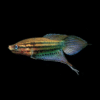
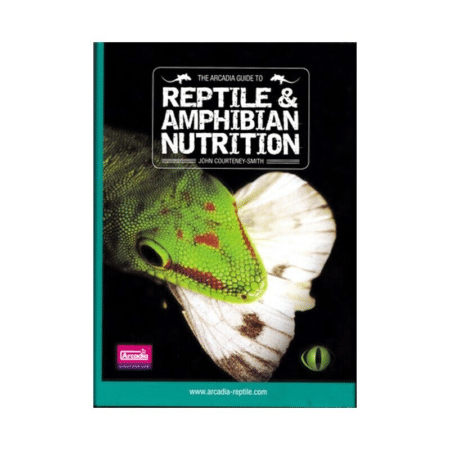
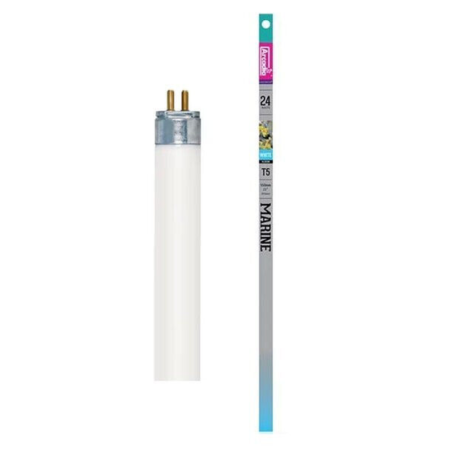


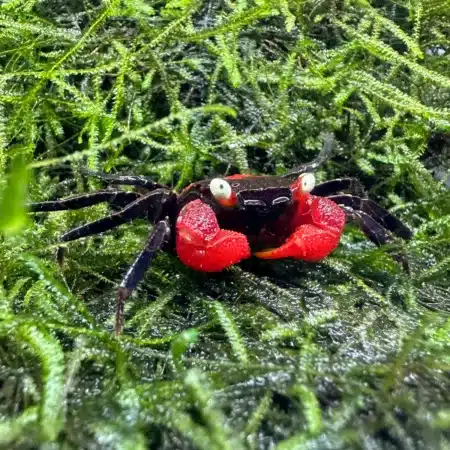
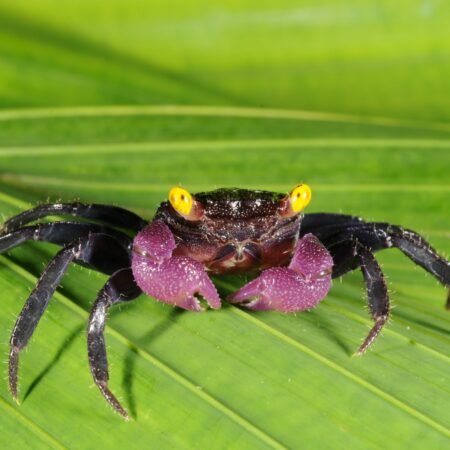


Emily Sanders (verified owner) –
I recently added a Leopard Bushfish to my 55-gallon freshwater aquarium, and I couldn’t be happier with this beautiful creature! After about two months of observing its behavior, I can confidently say this fish is not just stunning but also a joy to watch. Its vibrant colors and unique spotting pattern have truly brought my tank to life.
What I love most about this tropical fish is its personality; it’s both curious and playful, often hiding among the plants and then darting out to explore. It’s essential to provide plenty of cover, as they prefer a slightly shaded environment, which I’ve noticed enhances their colors even more.
I’ve kept various aquarium fish over the years, but the Leopard Bushfish has a charm that’s hard to beat. Compared to other similar species I’ve owned, this one seems more adaptable to different water conditions and is less prone to stress. Just be mindful of any smaller fish in your tank, as it can be a little territorial.
If you’re considering adding a Leopard Bushfish to your collection, I wholeheartedly recommend it for anyone looking to add both beauty and personality to their aquarium. Just ensure your setup allows for plenty of hiding spots, and you’ll have a happy, healthy fish that thrives in your care!
Emily Carter (verified owner) –
I recently added a Leopard Bushfish to my community tank, and I couldn’t be happier! After about two weeks of acclimation, this little guy quickly found his place among my other freshwater fish. His vibrant spots and unique swimming style genuinely enhance the visual appeal of my aquarium.
What I love most about the Spotted Ctenopoma is its calm demeanor. It gets along fabulously with my schooling fish, and I’ve noticed it actively engages in the tank, exploring every nook and cranny. Compared to some other tropical fish I’ve kept, which can be quite aggressive, this species has been a breath of fresh air.
The shipping was impressively fast, and the fish arrived healthy and lively—kudos to the seller for prioritizing fish welfare! My only minor concern was that it initially hid quite a bit, but after a week, it became more confident and now swims out during feeding times.
I highly recommend the Leopard Bushfish for both beginner and experienced aquarists. It’s a beautiful, low-maintenance fish that adds character to any aquarium. Just ensure you provide plenty of hiding spots, and you’ll be rewarded with an active, happy fish!